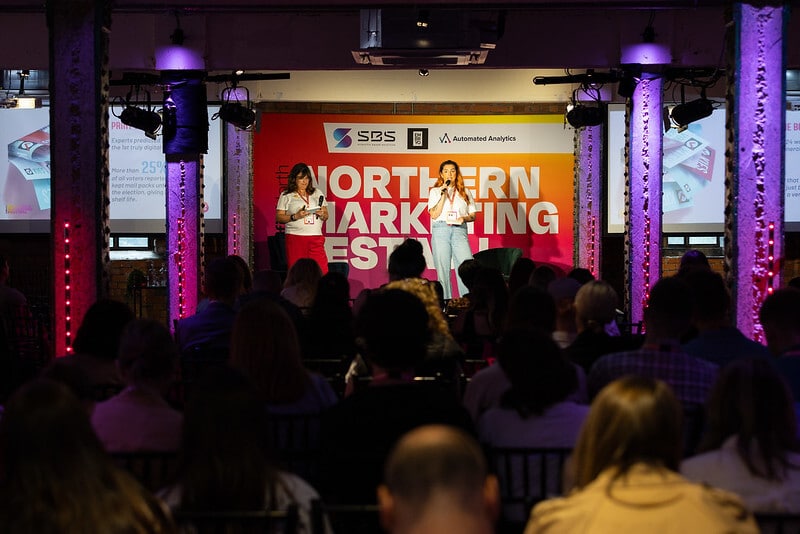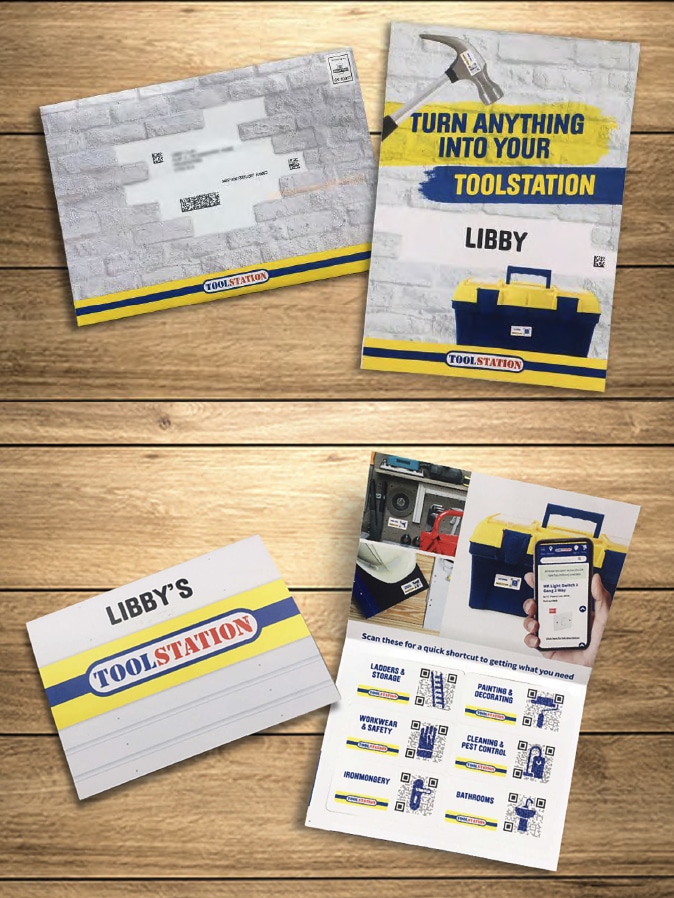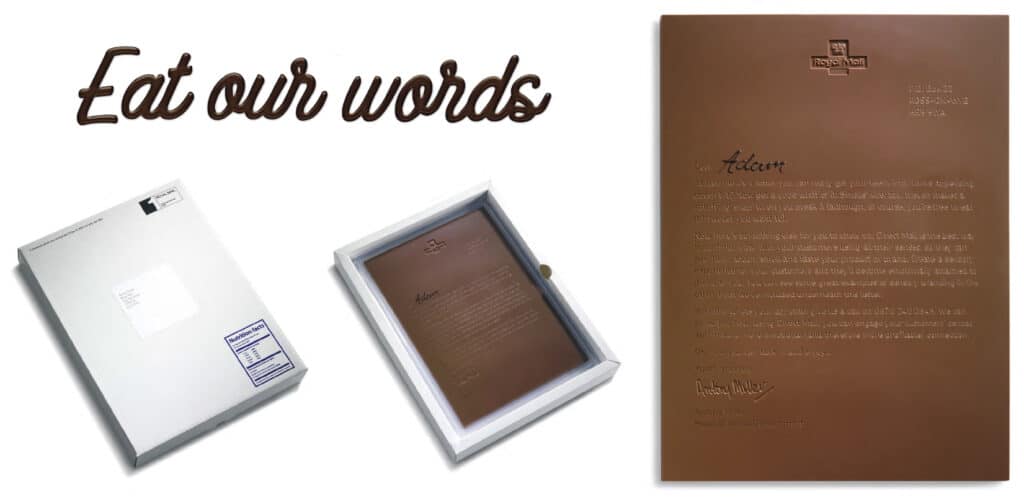In our increasingly digital world, there’s a powerful paradox taking shape: the more we embrace technology, the more we crave authentic, tangible experiences.
As Country Captain for Print.com in the UK, I’ve witnessed first hand how the most successful brands are discovering that print isn’t the antithesis of digital marketing – it’s the perfect complement.
The marketing landscape has undergone seismic shifts in recent years, with businesses rushing to embrace digital-first strategies. While digital channels offer remarkable reach and analytics, something crucial has been lost in the translation from physical to pixels.
The science behind print’s enduring power
What makes print so compelling isn’t just nostalgia – it’s neuroscience. As Dr. David Eagleman, the renowned Stanford neuroscientist, says: “The more senses you engage, the more deeply your brain encodes information and experiences.”
When we touch something, our brains process it faster and remember it longer. Print activates multiple neural pathways simultaneously – visual, tactile and smell. This is why print sticks in ways that digital simply cannot replicate.
Recent research confirms this. Lotta Edholm, Swedish Minister of Education, revealed in 2023 that studies presented by the Swedish National Agency for Education proved that students who are reading textbooks can understand better than those who are using digital content.

The numbers don’t lie
The data supporting print’s effectiveness is overwhelming. In our campaigns, we’ve consistently seen that campaigns with mail in the mix are 52% more likely to report ROI effects and 43% more likely to report revenue uplifts, according to Marketreach. But perhaps most telling is that 33% of direct mail leads to a commercial action such as going online to make a purchase or use a voucher.
This creates what we call the “phygital journey” – where print serves as the catalyst that drives consumers back into digital channels.
Consider the remarkable transformation we’ve seen with personalisation. Personalised marketing is interacted with 4.5 times on average, demonstrating print’s inherent ability to feel personal and targeted.
Trust in print
In an era of ‘fake news’ and digital skepticism, trust has become marketing’s most valuable currency. Print delivers this in abundance. Our research reveals that 71% of people completely trust the mail they receive, while 99.1% of people expressed a positive sentiment.
This trust stems from print’s three core attributes: credibility, permanence and personalisation. Unlike digital communications that can be easily manipulated or deleted, print carries an inherent authority that consumers recognise and value.
Recent Two Sides research confirms this trend, showing that when it comes to essential communications like medical information, financial statements and legal documents, consumers consistently choose print over digital for its security, clarity, reliability and permanence.
Dispelling the environmental myths
One of the greatest misconceptions about print concerns its environmental impact. As someone passionate about sustainability, I’m proud to champion print’s genuinely green credentials.
In 2022, the European paper and cardboard recycling rate was 83% – the highest of any packaging material, outperforming metallic packaging (77%), glass packaging (76%), and far exceeding that of plastic packaging (41%).

The environmental story gets even better. Paper is recycled on average 3.5 times a year in Europe, with a paper recycling rate of 79% in 2023, making it one of the most circular materials available. In fact, 70% of all fibres used to make paper in the UK are recycled.
Real-world success stories
The power of combining digital strategy with physical execution becomes clear when we examine real-world campaigns.
Coca-Cola’s recent personalised packaging campaign achieved remarkable results: global sales increased by 33%, with a 7% increase in young adult consumption and 51% of Twitter users in the UK mentioning Coca-Cola using the name or hashtags.
Similarly, Toolstation’s phygital approach delivered just as effectively: 10% increase in website traffic, £1 million saving on costs, and targets smashed by 300%. They accomplished this by collecting digital customer data, creating personalised mailers with QR codes linked to their usual products, then driving recipients back to digital channels for purchase.
And Royal Mail’s sensory-focused campaign demonstrated print’s emotional impact, with their chocolate bar direct mail piece generating a 74% increase in positive sentiment about the Royal Mail brand and £1.17m revenue from a £210k investment.

The generational surprise
Perhaps most surprising is print’s appeal across generations. Marketreach reports that 77% of Gen Zs and younger Millennials rate mail favourably, 82% of Millennials expressed a higher trust in print over digital, and 88% prefer a blend of physical and digital. This challenges every assumption about digital natives preferring purely digital communications.
The latest Two Sides research supports this, showing that 65% of European consumers prefer printed books, recovering from 53% in 2021, and 76% want the right to choose how they receive their communications – printed or digital.
Integration, not isolation
The future of marketing isn’t about choosing between digital and print – it’s about strategic integration. Recent IPIA research with Madano, studying more than 12,000 online conversations, found that print’s effectiveness, impact and sustainability are increasingly recognised, along with its role as a trigger back to digital content.
This integration becomes seamless when we leverage technologies like QR codes, which have gained widespread acceptance since COVID. These bridge print and digital naturally, allowing recipients to move effortlessly between physical and digital experiences while maintaining the tactile impact that drives action.
The effectiveness of phygital campaigns becomes evident in measurement. 90% of customised mail is engaged with, and 63% of mail attracts undivided attention. This level of engagement is virtually impossible to achieve through digital channels alone, where distractions abound and attention spans shrink.
Physical permanence builds trust as it grabs attention and holds it. 58% of mail is retained for future reference, creating lasting brand impressions that extend far beyond the initial touchpoint.
Read more: Print.com: From accidental start to a co-creation revolution in Manchester
Looking ahead: Creating WOW moments
As Marco Aarnink, Founder and CEO of Print.com, often says: “Let’s create a WOW together!” This perfectly encapsulates our mission to transform digital-first strategies into multi-sensory experiences that truly resonate.
The brands succeeding today aren’t abandoning digital – they’re enhancing it with print’s unique strengths and power to tell stories and personalise.
The evidence is overwhelming: print doesn’t compete with digital marketing – it completes it. By turning digital-first campaigns into real-world experiences, we create the kind of meaningful, memorable connections that drive genuine business results.
In a world where everyone is going digital, going physical becomes the ultimate differentiator. Print engages us in ways that purely digital communications simply cannot match.
Fiona Robinson is Country Captain (UK) for Print.com, where she leads strategic initiatives to integrate print with digital marketing campaigns across the United Kingdom.












